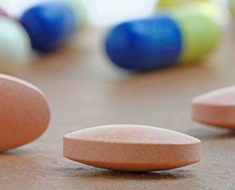The evolution of healthcare over the next 20 years will largely be driven by increased interoperability of data, rising consumer demands for more transparency, and far-reaching advances in the fields of genetics and life science.
WHY IT MATTERS
These were the findings of Deloitte’s most recent report on the future of healthcare, which were underpinned by six broad assumptions, which include the rise of data-sharing and data interoperability, increased access to healthcare, more empowered consumers, behavioral change, and scientific breakthroughs.
Deloitte, which this week also announced the launch of ConvergeHEALTH Connect, a suite of four healthcare products targeting a range of concentrations from public health care to personalized care, all of which run on the Salesforce Health Cloud, is bullish on the future of U.S. healthcare.
In fact, in its new report – which builds on another study looking ahead to 2040, published early this year – researchers even goes so far as to project that just 14 to 21 years from now, there will be “almost zero diseases with no cure” and projects that cell and gene therapies will become affordable for the masses.
More empowered consumers with access to a variety of digital tools will also help drive improved outcomes in health, with Deloitte projecting that within seven to 14 years, nearly three-quarters of consumers will be using digital tools to find affordable care.
Furthermore, these types of tools will allow consumers to make more informed decisions regarding when to seek professional care, while always-on biometric sensors, mobile apps and other digital tools will lead to greater ability to prevent diseases and facilitate at-home treatment.
THE LARGER
In broader terms, consumers will also use digital tools to support better health choices, with Deloitte pointing to recent research indicating digital engagement programs, if designed correctly, can help nudge people toward healthy behaviors.
The report also notes that more consumers are willing to share data, and as transparency in data use and collection rises and consumer trust and willingness to share additional information follows, larger aggregated data sets will be able to provide a more holistic view of health populations.
Deloite cited a program rolled out in 2018 by the Centers for Medicare & Medicaid Services, Blue Button 2.0, which allows 53 million Medicare beneficiaries access to health information collected over the last four years on their mobile phones or other personal devices.
Meanwhile, the proposed interoperability rules from CMS and the Office of the National Coordinator for Health IT, published in February, could help drive the U.S. healthcare system toward greater interoperability – a key development for the useful analysis of rapidly increasing mountains of data.
ON THE RECORD
“There’s no denying the exponential growth of technology and the capabilities that it brings to the consumer,” David Betts, principal in Deloitte Consulting’s Life Sciences and Health Care practice, told Healthcare IT News. “Today, we’re seeing organizations developing new technologies specifically designed to manage individuals’ health and based on what we know about consumer demand, we expect those health technologies will continue to be adopted.
“Imagine if, given a highly sensorized environment that can begin to detect minute changes in an individual’s health, we could identify the moment when an individual moves from health into sickness allowing for micro-interventions, early on, that allow us to get ahead of much disease,” Betts added. “We believe it’s technologies like this that will shift the focus from treating illness to maintaining wellness.”
Nathan Eddy is a healthcare and technology freelancer based in Berlin.
Email the writer: [email protected]
Twitter: @dropdeaded209
Healthcare IT News is a publication of HIMSS Media.
Source: Read Full Article





